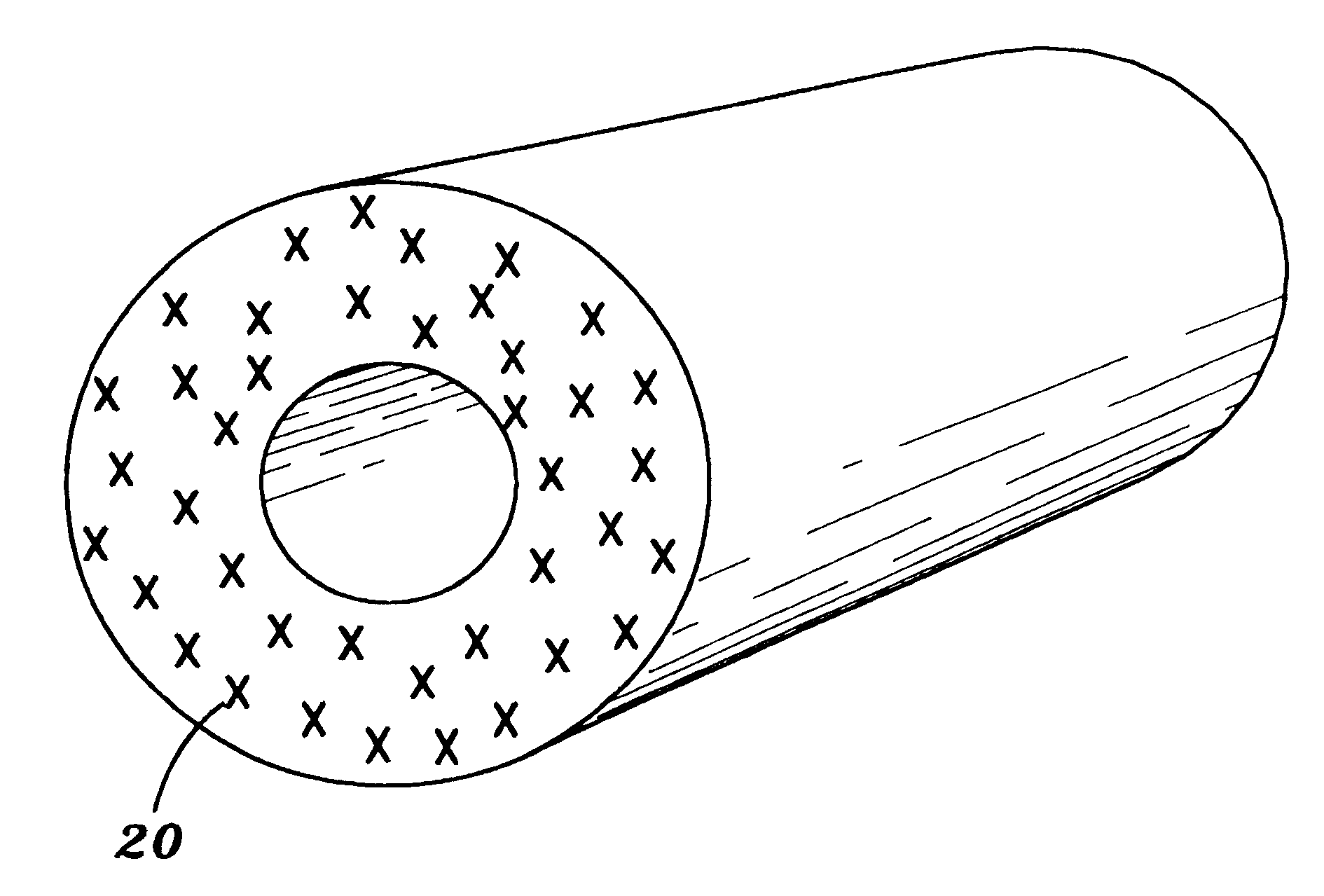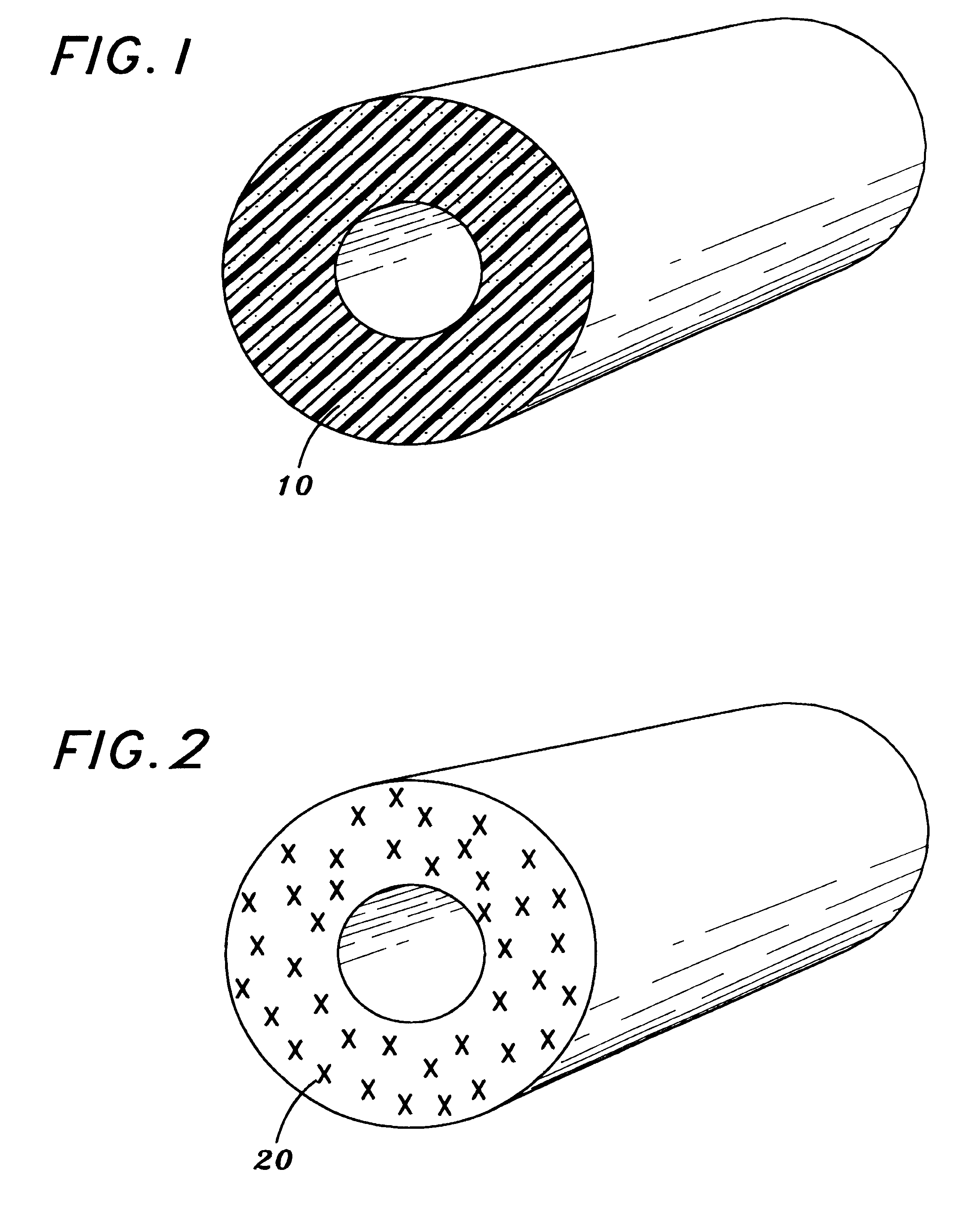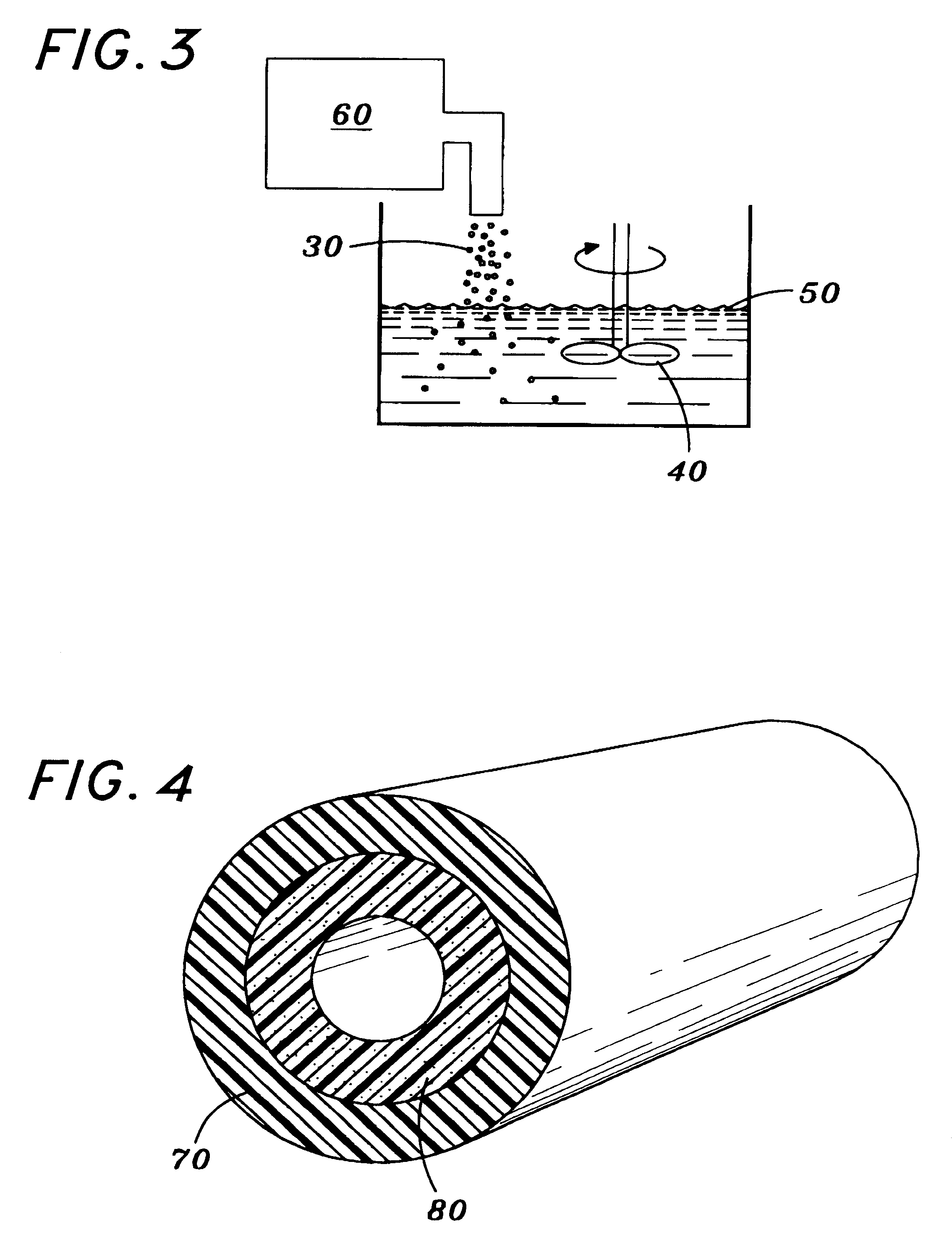Sensorially active substance embedded in plastic
a technology of sensory active substances and plastics, applied in the field of bittertasting substances, can solve the problems of damage to the plastic cable housing, inability to evenly distribute the active agent throughout the substrate, and disadvantages of forming microcapsules
- Summary
- Abstract
- Description
- Claims
- Application Information
AI Technical Summary
Problems solved by technology
Method used
Image
Examples
Embodiment Construction
Denatonium benzoate readily dissolves in molten polyvinyl chloride (PVC). Adding approximately 0.2 grams of denatonium benzoate to 100 grams of clear flexible PVC yields a clear, brownish plastic. This concentration of denatonium benzoate does not deter rats from gnawing and eating the PVC, but does have a pronounced soporific effect on rats which ingest the treated PVC. Adding approximately 2.5 grams of denatonium benzoate to 100 grams of clear flexible PVC yields a dark red plastic with an acrid odor. This concentration of denatonium benzoate has proven to be quite effective in discouraging rats from gnawing on the plastic, even when the sample was thoroughly washed to remove any latent denatonium benzoate crystals from its surface. It is probable that this concentration represents a practical maximum; past this level, the PVC changes consistency, becoming sticky, and an objectionable bitter flavor pervades the air. Upon cooling, free crystals of denatonium benzoate reside on the ...
PUM
 Login to View More
Login to View More Abstract
Description
Claims
Application Information
 Login to View More
Login to View More - R&D
- Intellectual Property
- Life Sciences
- Materials
- Tech Scout
- Unparalleled Data Quality
- Higher Quality Content
- 60% Fewer Hallucinations
Browse by: Latest US Patents, China's latest patents, Technical Efficacy Thesaurus, Application Domain, Technology Topic, Popular Technical Reports.
© 2025 PatSnap. All rights reserved.Legal|Privacy policy|Modern Slavery Act Transparency Statement|Sitemap|About US| Contact US: help@patsnap.com



